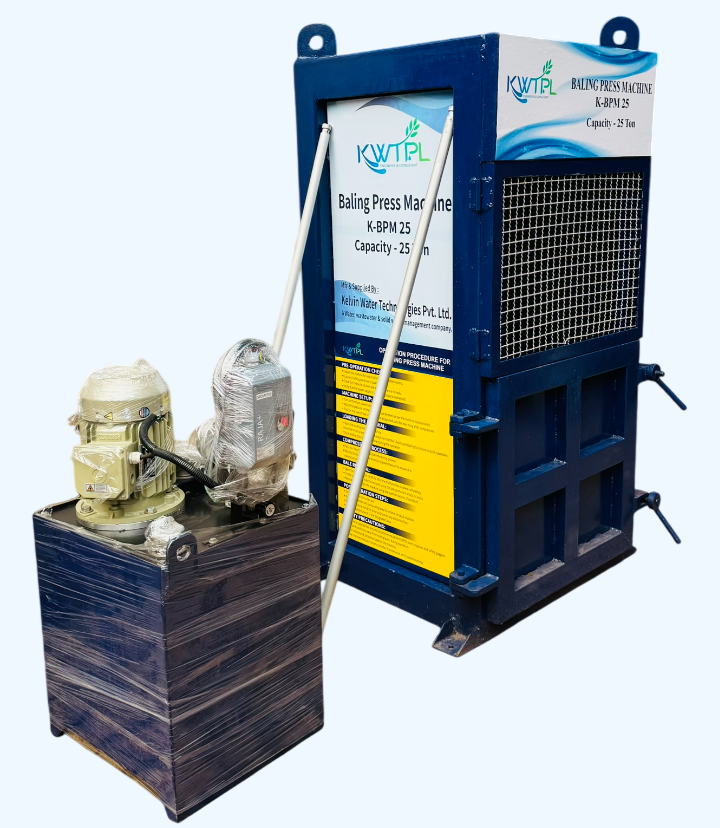In today’s fast-evolving industrial landscape, managing waste efficiently has become a crucial aspect of operational sustainability. Among various waste management tools, the baling press machine stands out as a game-changer. This innovative equipment significantly streamlines the process of compacting waste materials, enhancing storage, transportation, and recycling operations. This article explores the comprehensive functionality, benefits, types, applications, and future prospects of baling press machines.
What is a Baling Press Machine?
A baling press machine, often referred to simply as a baler, is a mechanical device used to compress waste materials—such as paper, plastics, cardboard, metals, and textiles—into compact, dense bales. These bales are easier to handle, transport, and recycle, helping industries reduce their waste footprint while optimizing logistics.
The machine applies high pressure to lose waste through a hydraulic or mechanical pressing mechanism. Once compressed, the materials are tied into uniform bundles (bales) using wire, twine, or straps. This compaction not only reduces the volume but also stabilizes the materials for further processing or sale to recyclers.
Key Components and Working Principle
A typical baling press machine consists of several essential components:
- Hopper/Feeding Chamber: Where loose waste is fed into the machine.
- Pressing Ram: A hydraulic or mechanical piston that applies force to compress the material.
- Compression Chamber: The space where the waste is compacted into bales.
- Tying Mechanism: Automatically or manually binds the compressed bale.
- Control Panel: Operates and monitors the machine.
The working principle is straightforward: waste is loaded into the hopper; the ram then compresses the waste into the chamber with immense pressure. After reaching the required density, the machine ties the bale securely, which is then ejected or manually removed.
Types of Baling Press Machines
Depending on their operational design and applications, baling press machines are classified into several types:
- Horizontal Balers
These are commonly used for medium to large scale operations. Waste is fed horizontally, and the compressed bales exit at the front or side. Horizontal balers are suitable for materials like cardboard, plastic films, and textiles. - Vertical Balers
Ideal for smaller businesses or where space is limited. Waste is loaded vertically from the top, and bales are formed in an upright position. Vertical balers are typically used for paper, cardboard, and light plastics. - Two-Ram Balers
Featuring two rams, one for pre-compressing and one for main compression, these balers handle bulky and heavy materials like metals and plastic drums. - Specialized Balers
Customized machines designed for specific materials such as agricultural waste, e-waste, or hazardous materials.
Benefits of Using Baling Press Machine
The baling press machine offers a wide array of benefits for industries, municipalities, and recycling centres:
- Volume Reduction: Baling can reduce waste volume by up to 80-90%, freeing up valuable space.
- Cost Savings: Smaller waste volume leads to reduced transportation and landfill costs.
- Improved Logistics: Compact bales are easier to stack, store, and transport efficiently.
- Enhanced Recycling Efficiency: Sorted, compacted bales facilitate smoother recycling processes, reducing contamination.
- Environmental Impact: Encourages responsible waste management, reducing landfill burden and carbon footprint.
- Safety and Cleanliness: Reduces loose debris, minimizing workplace hazards and improving sanitation.
- Automation and Labor Efficiency: Modern balers with automatic tying and feeding systems decrease manual labour needs.
Applications of Baling Press Machine
Baling press machines find applications in numerous industries and sectors:
- Manufacturing Units: For handling scrap metals, plastic, and paper waste.
- Retail and Wholesale: Compressing cardboard and packaging materials.
- Recycling Centres: Processing diverse recyclable materials for resale.
- Agriculture: Compacting crop residues and organic waste.
- Municipal Solid Waste Management: Reducing volume of collected waste for landfill or incineration.
- Textile Industry: Compressing fabric scraps and discarded garments.
Key Considerations When Choosing a Baling Press Machine
To maximize the advantages of a baler, several factors should be considered:
- Material Type: Different balers are suited for different waste types, e.g., metals require heavy-duty machines.
- Capacity and Bale Size: Production volume dictates the size and throughput capacity.
- Automation Level: Fully automatic balers reduce labour but come at higher costs.
- Footprint and Space: Vertical balers suit limited spaces; horizontal balers need larger floor areas.
- Power Source: Hydraulic balers offer powerful compression; mechanical balers are simpler.
- Safety Features: Modern machines include emergency stop buttons, safety doors, and sensors.
- Maintenance and Durability: Choosing machines from reputed manufacturers ensures longevity and lower downtime.
Innovations and Future Trends
With rapid technological advancements, baling press machines are evolving to meet modern waste management challenges:
- Smart Balers: Equipped with IoT sensors and automation for remote monitoring and optimized operation.
- Energy-Efficient Models: Designed to consume less power without compromising performance.
- Integration with Sorting Systems: Baling machines are increasingly linked with automated sorting to streamline the recycling chain.
- Modular Designs: Machines that can be customized or upgraded as per changing waste profiles.
- Eco-Friendly Materials: Use of biodegradable components for tying and packaging.
Kelvin Water Technologies: Leading Baling Press Machine Manufacturer
Among reputed manufacturers, Kelvin Water Technologies has established itself as a pioneer in providing high-quality baling press machines tailored to various industrial needs. With a commitment to innovation, cost-effectiveness, and sustainability, Kelvin offers a broad range of balers designed for maximum efficiency and durability. Their machines cater to industries ranging from municipal solid waste management to heavy industrial scrap handling.
Conclusion
In conclusion, the baling press machine is an indispensable asset in modern waste management and recycling. Its ability to reduce waste volume, enhance logistics, and promote recycling not only improves operational efficiency but also aligns with global sustainability goals. Whether you are a small business or a large industrial setup, investing in the right baling press machine can revolutionize your waste handling processes, cut costs, and support a greener future.



